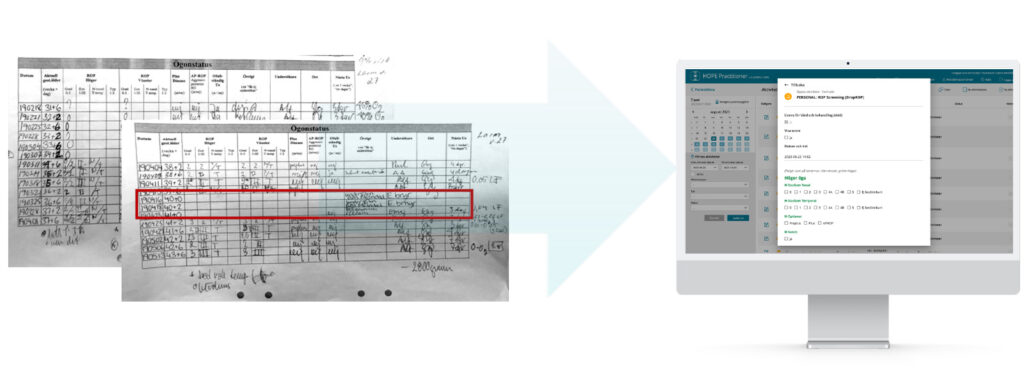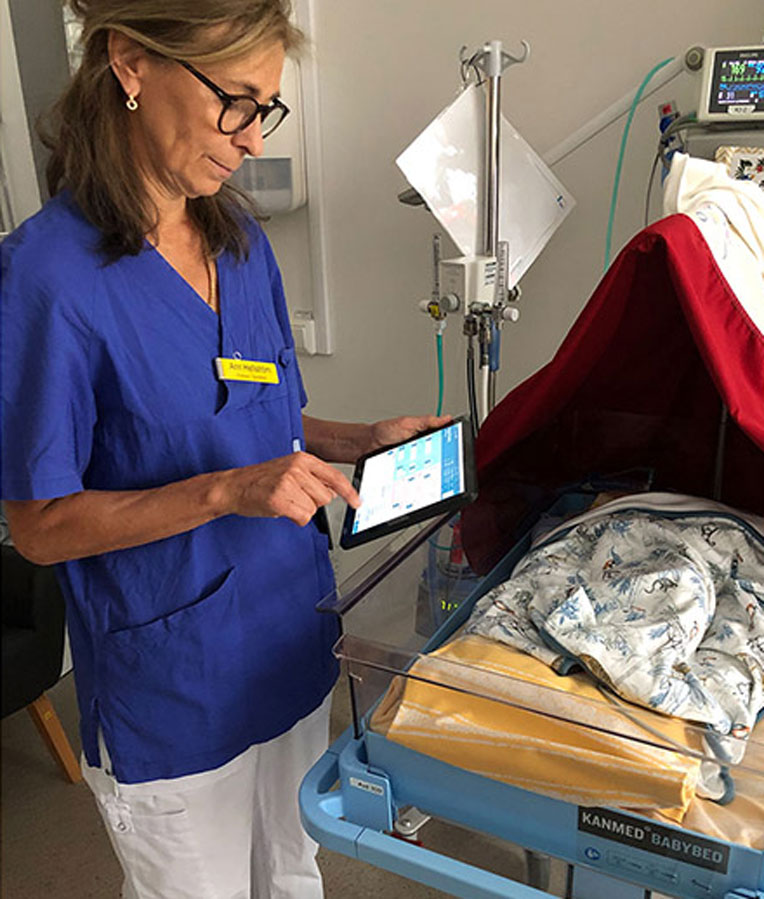HOPE WebROP
Digital evidence-based support
HOPE WebROP is a digital evidence-based decision support for screening and treatment of premature infants at risk of developing ROP (retinopathy of prematurity). The use of the HOPE Platform by professor and researcher, Ann Hellström is an example of how as a subcontracted product, the platform can be easily adapted to different type of user application – in this case, a Windows application rather than a web application.
Communication between staff and healthcare units
HOPE WebROP supports communication between care staff at different eye clinics. As it is common for premature children to be moved between different eye clinics, ophthalmologists need to be able to quickly and easily see if the baby has been transferred somewhere else and follow screening results produced somewhere else. This is because the baby may be transferred back to the original medical facility clinic for any examinations and laser treatment if its condition worsens.
Before HOPE WebROP was available, paper and pen were used to record different values during ROP screening examinations. A calculator was then used in combination with a calculation formula openly available on the internet.

HOPE WebROP replaces existing paper-based documentation with a practical and secure digital decision support. The service performs automated calculation and digital documentation with automated transfer to medical records and quality registers. This gives a time saving in processing of about 40 minutes per child and visit.

“Using WebROP has helped us optimise our resources and minimise the risk of blindness with the ROP disease. The examinations and treatments are extremely time critical. Using WebROP will significantly streamline and increase quality of care. Not a day too early - it should have been there a long time ago.”
Ann Hellström, Professor of Paediatric Ophthalmology, Drottning Silvias Barn och Ungdomssjukhus, Sahlgrenska Uuniversity Hospital, Västra Götaland Region





